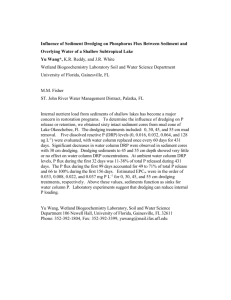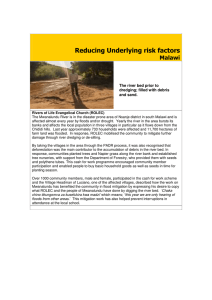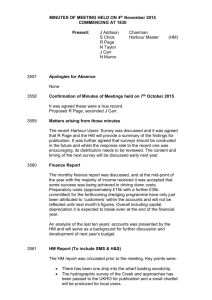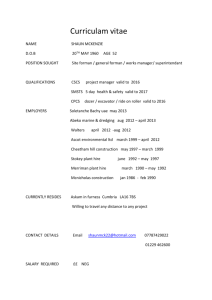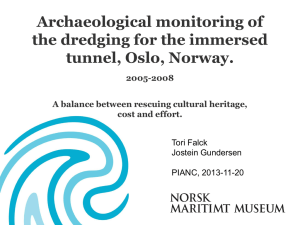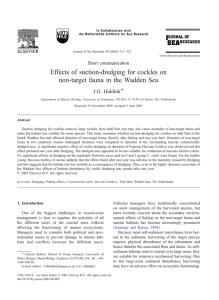Marine aggregate dredging from a fished point of view
advertisement
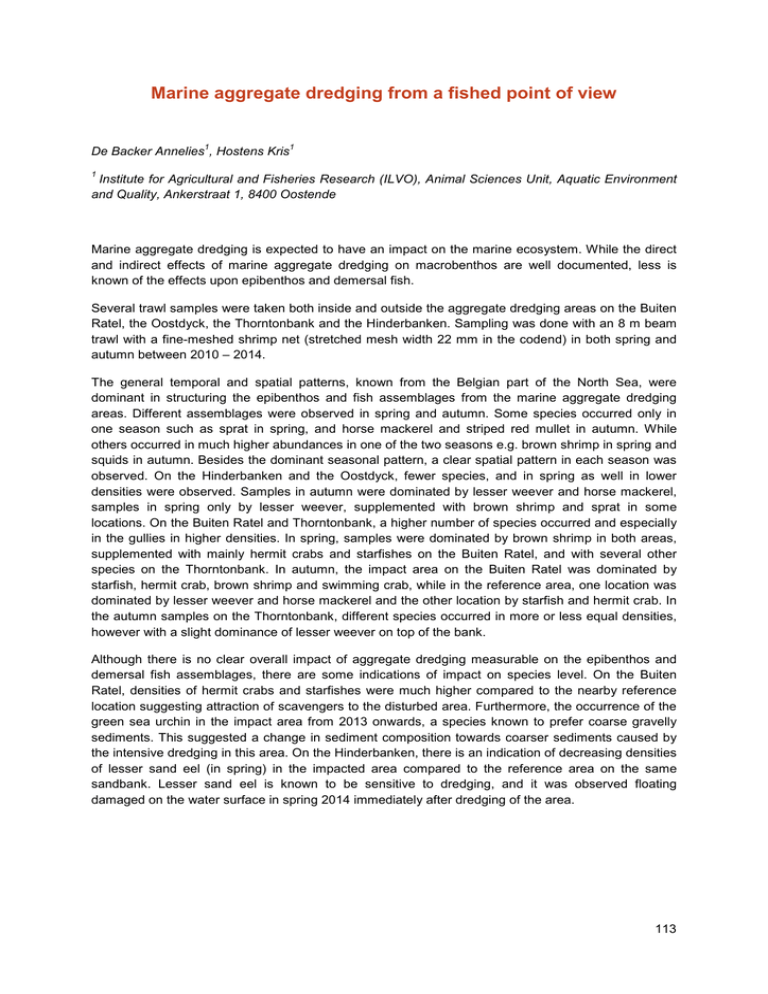
Marine aggregate dredging from a fished point of view 1 De Backer Annelies , Hostens Kris 1 1 Institute for Agricultural and Fisheries Research (ILVO), Animal Sciences Unit, Aquatic Environment and Quality, Ankerstraat 1, 8400 Oostende Marine aggregate dredging is expected to have an impact on the marine ecosystem. While the direct and indirect effects of marine aggregate dredging on macrobenthos are well documented, less is known of the effects upon epibenthos and demersal fish. Several trawl samples were taken both inside and outside the aggregate dredging areas on the Buiten Ratel, the Oostdyck, the Thorntonbank and the Hinderbanken. Sampling was done with an 8 m beam trawl with a fine-meshed shrimp net (stretched mesh width 22 mm in the codend) in both spring and autumn between 2010 – 2014. The general temporal and spatial patterns, known from the Belgian part of the North Sea, were dominant in structuring the epibenthos and fish assemblages from the marine aggregate dredging areas. Different assemblages were observed in spring and autumn. Some species occurred only in one season such as sprat in spring, and horse mackerel and striped red mullet in autumn. While others occurred in much higher abundances in one of the two seasons e.g. brown shrimp in spring and squids in autumn. Besides the dominant seasonal pattern, a clear spatial pattern in each season was observed. On the Hinderbanken and the Oostdyck, fewer species, and in spring as well in lower densities were observed. Samples in autumn were dominated by lesser weever and horse mackerel, samples in spring only by lesser weever, supplemented with brown shrimp and sprat in some locations. On the Buiten Ratel and Thorntonbank, a higher number of species occurred and especially in the gullies in higher densities. In spring, samples were dominated by brown shrimp in both areas, supplemented with mainly hermit crabs and starfishes on the Buiten Ratel, and with several other species on the Thorntonbank. In autumn, the impact area on the Buiten Ratel was dominated by starfish, hermit crab, brown shrimp and swimming crab, while in the reference area, one location was dominated by lesser weever and horse mackerel and the other location by starfish and hermit crab. In the autumn samples on the Thorntonbank, different species occurred in more or less equal densities, however with a slight dominance of lesser weever on top of the bank. Although there is no clear overall impact of aggregate dredging measurable on the epibenthos and demersal fish assemblages, there are some indications of impact on species level. On the Buiten Ratel, densities of hermit crabs and starfishes were much higher compared to the nearby reference location suggesting attraction of scavengers to the disturbed area. Furthermore, the occurrence of the green sea urchin in the impact area from 2013 onwards, a species known to prefer coarse gravelly sediments. This suggested a change in sediment composition towards coarser sediments caused by the intensive dredging in this area. On the Hinderbanken, there is an indication of decreasing densities of lesser sand eel (in spring) in the impacted area compared to the reference area on the same sandbank. Lesser sand eel is known to be sensitive to dredging, and it was observed floating damaged on the water surface in spring 2014 immediately after dredging of the area. 113
